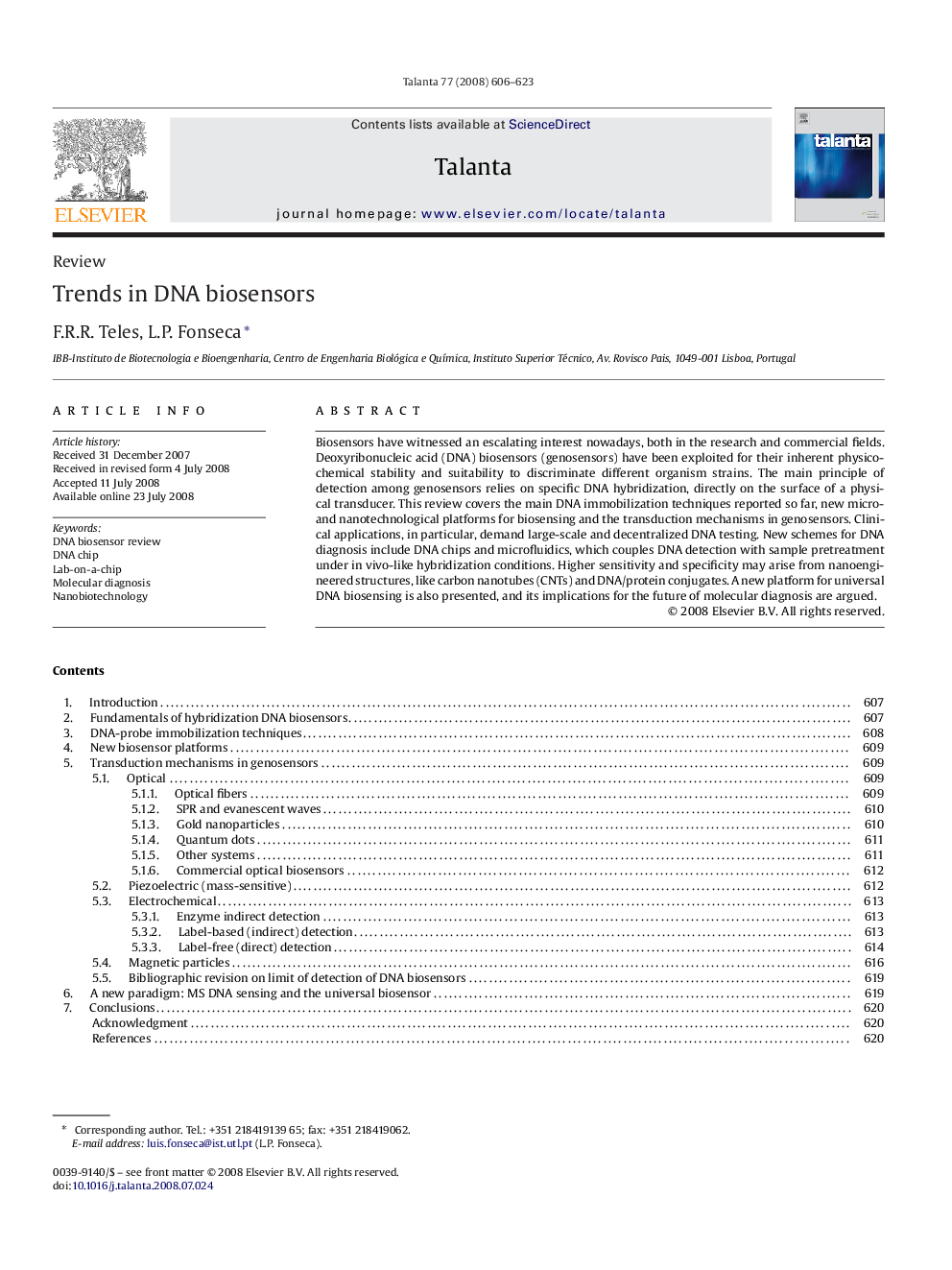| Article ID | Journal | Published Year | Pages | File Type |
|---|---|---|---|---|
| 1243110 | Talanta | 2008 | 18 Pages |
Biosensors have witnessed an escalating interest nowadays, both in the research and commercial fields. Deoxyribonucleic acid (DNA) biosensors (genosensors) have been exploited for their inherent physico-chemical stability and suitability to discriminate different organism strains. The main principle of detection among genosensors relies on specific DNA hybridization, directly on the surface of a physical transducer. This review covers the main DNA immobilization techniques reported so far, new micro- and nanotechnological platforms for biosensing and the transduction mechanisms in genosensors. Clinical applications, in particular, demand large-scale and decentralized DNA testing. New schemes for DNA diagnosis include DNA chips and microfluidics, which couples DNA detection with sample pretreatment under in vivo-like hybridization conditions. Higher sensitivity and specificity may arise from nanoengineered structures, like carbon nanotubes (CNTs) and DNA/protein conjugates. A new platform for universal DNA biosensing is also presented, and its implications for the future of molecular diagnosis are argued.
